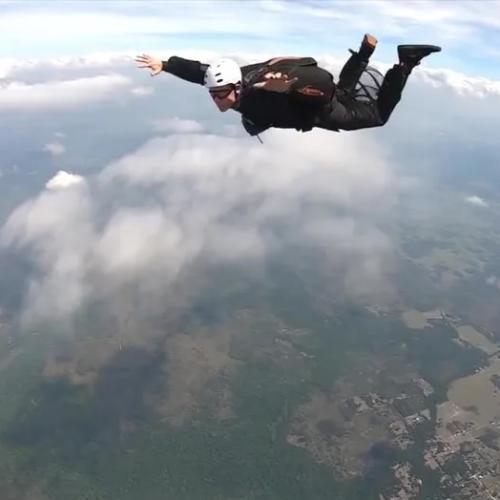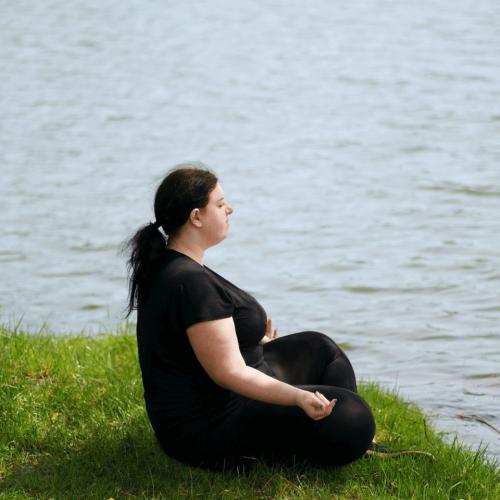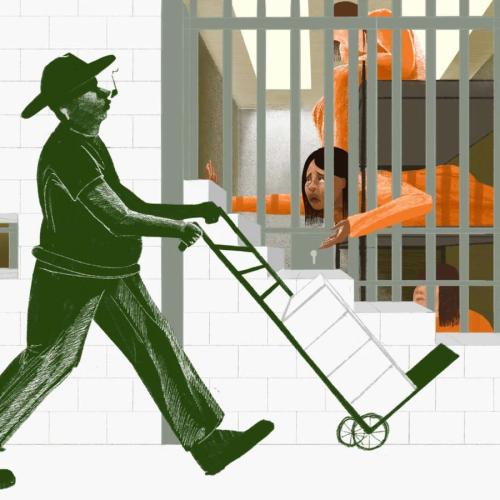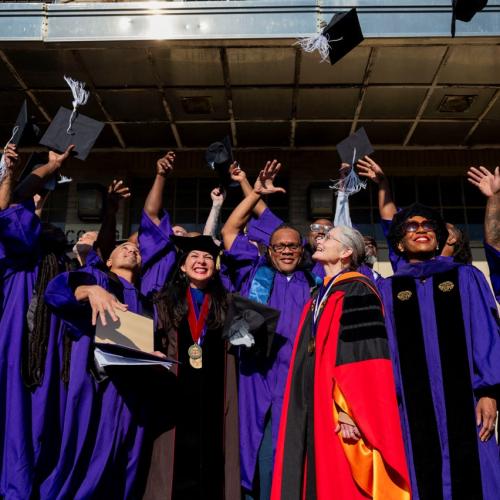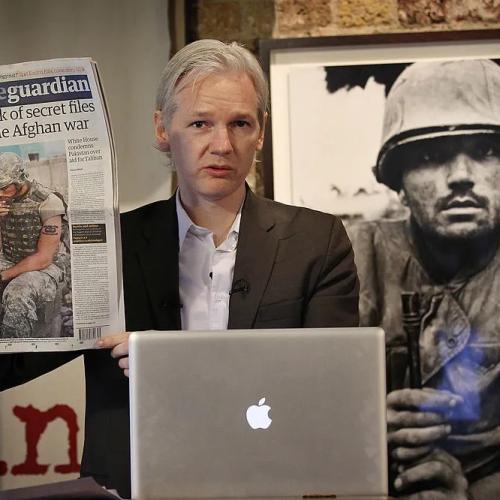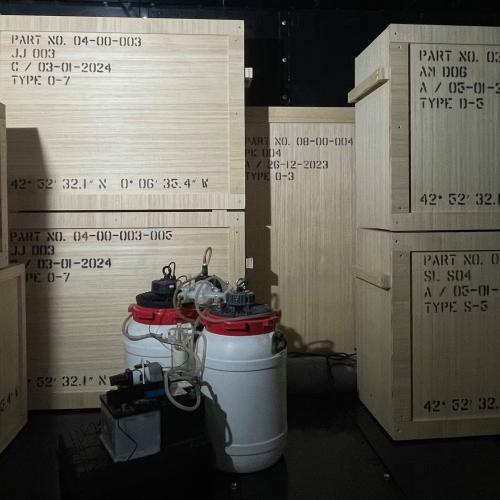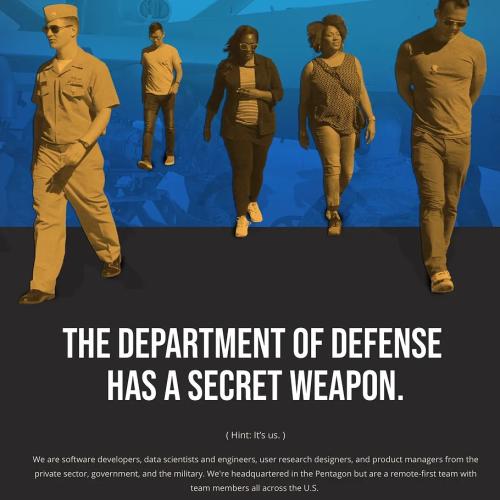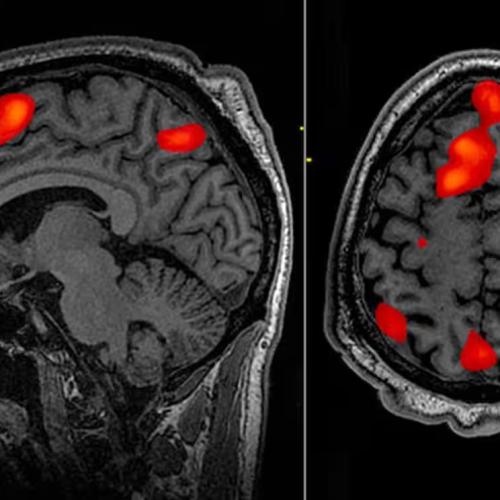Kennedy Assassination News Stories
Below are key excerpts of revealing news articles on the Kennedy Assassination from reliable news media sources. If any link fails to function, a paywall blocks full access, or the article is no longer available, try these digital tools.
For further exploration, delve into our comprehensive JFK Assassination Information Center.
A new nonfiction streaming series, “Four Died Trying” ... investigates not only the JFK liquidation, but also the people and players allegedly behind the assassinations of Malcolm X on Feb. 21, 1965; Rev. Martin Luther King Jr., on April 4, 1968; and Sen. Robert Francis Kennedy on June 6, 1968. Each of these killings is a false mystery. We know what happened to these guys. Each of these leaders in the 1960s were killed by the powers-that-be because of what they were doing at the time. Who planned it? It’s a combination of people within the Pentagon, the CIA, Johnson, elements of the mob. There’s continually more evidence to show that all of these groups were involved. They were each of them, in their own ways, working for a better world. President Kennedy ... was trying to end the Cold War. Malcolm was going to bring charges against the U.S. in the U.N., in the World Court. Martin Luther King came out against the Vietnam War and was planning the occupation of Washington, D.C. [with the Poor People’s Campaign]. Bobby was becoming the candidate of the poor and disenfranchised and was talking about investigating his brother’s death and pulling out of Vietnam. We haven’t had any president since then who hasn’t been a creature of this military-industrial-intelligence-complex. This is the profound warning Eisenhower gives us. He worries that a technocracy, a scientific elite, could control American democracy. It’s a profound warning from a general and a president to the American public that we unfortunately did not heed as we should have.
Note: Listen to an excellent podcast with the filmmakers about what these tragic assassinations had in common. For more along these lines, read our in-depth essay on the MLK assassination, along with concise summaries of revealing news articles on assassinations.
This year marks the 60th anniversary of John F. Kennedy’s assassination. JFK: What the Doctors Saw [is] a documentary featuring previously unreleased footage — and the testimony of seven doctors who were there in the emergency room of Parkland Hospital trying to save the then-president’s life after he was shot as his motorcade passed through Dealey Plaza on Nov. 22, 1963. The film raises serious doubts about whether Lee Harvey Oswald acted alone in killing JFK (Oswald was shot to death two days later by local nightclub owner Jack Ruby as he was escorted through the Dallas Police building). “I became involved with the story because one of my personal physicians told me he was in the emergency room at Parkland Hospital when JFK was brought in,” Jacque Lueth, the film’s executive producer who interviewed the seven Parkland doctors, [said]. “He introduced me to six of the other doctors who were there that day and when I interviewed them, I began to realize their observations from Trauma Room 1 didn’t match the government story.” She adds, “Based upon my interviews with the doctors, Jim Jenkins and Robert Tanenbaum, and my own research, there’s no question in my mind there was a government cover-up.” The doctors in the film contend one of the bullets that hit JFK entered through his throat, meaning it was an entrance wound from the front — and that there were potentially two gunmen, with Oswald firing from the rear.
Note: Explore concise summaries of revealing news articles on the JFK assassination from reliable major media sources. For more along these lines, check out our JFK Assassination Information Center.
He still remembers the first gunshot. Now, 60 years later, Paul Landis, one of the Secret Service agents just feet away from President John F. Kennedy on that fateful day in Dallas, is telling his story in full for the first time. His account differs from the official version. At age 88, he said, all he wants is to tell what he saw and what he did. He will leave it to everyone else to draw conclusions. What it comes down to is a copper-jacketed 6.5-millimeter projectile. The Warren Commission decided that one of the bullets fired that day struck the president from behind, exited from the front of his throat and continued on to hit Mr. Connally, somehow managing to injure his back, chest, wrist and thigh. It seemed incredible that a single bullet could do all that, so skeptics called it the magic bullet theory. Investigators came to that conclusion partly because the bullet was found on a stretcher believed to have held Mr. Connally at Parkland Memorial Hospital. In fact, [Mr. Landis] said, he was the one who found the bullet — and he found it not in the hospital near Mr. Connally but in the presidential limousine lodged in the back of the seat behind where Kennedy was sitting. “If what he says is true, which I tend to believe, it is likely to reopen the question of a second shooter, if not even more,” [Historian James] Robenalt said. “If the bullet we know as the magic or pristine bullet stopped in President Kennedy’s back, it means that the central thesis of the Warren Report, the single-bullet theory, is wrong.”
Note: For more along these lines, see concise summaries of revealing news articles on the Kennedy assassination from reliable major media sources. For deeper exploration, check out our comprehensive Information Center on John F. Kennedy's assassination, which challenge mainstream narratives about his assassination and the events leading up to it.
Paul Landis was one of two Secret Service agents tasked with guarding first lady Jacqueline Kennedy on November 22, 1963—the day President John F. Kennedy was assassinated. In a new book, The Final Witness, to be published in October, Landis claims to have seen something that afternoon that he had never publicly admitted before. Landis was approximately 15 feet away when Kennedy was mortally wounded. Landis saw and did something that he has kept secret for six decades, he says now. He claims he spotted a bullet resting on the top of the back of the seat. He says he picked it up, put it in his pocket, and brought it into the hospital. Then, upon entering Trauma Room No. 1 (at that stage, he was the only nonmedical person in the room besides Mrs. Kennedy, and both stayed for only a short period), he insists, he placed the bullet on a white cotton blanket on the president’s stretcher. This secret, as it turns out, may upend key conclusions of the Warren Commission, the body created by President Lyndon Johnson to investigate the assassination. Landis ... never sat for an interview before the FBI and never testified before the commission. There have been endless theories surrounding the assassination, but not one of them considered that a Secret Service agent might have brought a fully intact bullet, found on top of the rear seat of the limousine, into Parkland Memorial Hospital and placed it on the president’s stretcher. Not one.
Note: For more along these lines, see concise summaries of revealing news articles on the Kennedy assassination from reliable major media sources. For deeper exploration, check out our comprehensive Information Center on John F. Kennedy's assassination, which challenge mainstream narratives about his assassination and the events leading up to it.
President Joe Biden’s administration released more than 13,000 records of President John F. Kennedy's assassination Thursday, but it fell short of fully complying with the spirit of a 30-year-old law demanding transparency by now. With Thursday's action, about 98% of all documents related to the 1963 killing have now been released and just 3% of the records remain redacted in whole or in part, according to the National Archives, which controls the John F. Kennedy Assassination Records Collection. The records include more information on accused gunman Lee Harvey Oswald and his time spent in Mexico City. But about 4,300 records remain redacted in part. [CIA agent George] Joannides ... guided and monitored an anti-Fidel Castro group called Directorio Revolucionario Estudiantil (Revolutionary Student Directorate) in 1963 that came into contact with Oswald in New Orleans in the months before the assassination, leading some to speculate about CIA-related complicity in the killing. As Oswald interacted with DRE and became known as an activist who supported President Castro, the Pentagon was formulating a plan called Operation Northwoods to stage a false flag attack in the United States to blame on Cuba and justify a military confrontation to make up for the aborted Bay of Pigs fiasco two years before. The records and the CIA's deceit over Joannides' ties to Oswald spans decades and came to light only after the records act began to unearth information about him.
Note: While the mainstream narrative points to the CIA being complicit in the killing of Kennedy by a Communist lone gunman, there is overwhelming evidence not often talked about, that reveals how Kennedy was murdered by rogue elements within US government agencies as a result of his efforts towards peacemaking strategies over nuclear weapon warfare, among other reasons. For more along these lines, see concise summaries of deeply revealing news articles on intelligence agency corruption and the Kennedy assassination from reliable major media sources.
Among the intersections between [Lee Harvey] Oswald and the CIA, his time as a young Marine at the Atsugi naval air facility in Japan in 1957 is high among them. Atsugi was a launching pad for U-2 spy flights over the Soviet Union and was also a hub of the CIA's research into psychedelic drugs. "A CIA memo titled 'Truth Drugs in Interrogation' revealed the agency practice of dosing agents who were marked for dangerous overseas missions," wrote author David Talbot in "The Devil's Chessboard." A new document released in full last week relates directly to Oswald's time at Atsugi, revealing details about the CIA's response to testimony from a former agency accountant that the spy service had employed Oswald – who went on to be a gunman in the assassination of President John F. Kennedy in 1963. The CIA's claim to have had no contact with Oswald is undercut by the fact that George de Mohrenschildt, a CIA asset, became close friends with Oswald in the months before the assassination. According to documents found in the newly declassified files, at the same time as his trip, the CIA's Domestic Operations Division ran a search on de Mohrenschildt, "exact reason unknown," according to two documents created by a CIA analyst included in last week's declassification. The covert arm of the division was run at the time by E. Howard Hunt, a black ops specialist who confessed later in life to learning ahead of time of a conspiracy to assassinate Kennedy that involved high-level figures in the CIA.
Note: The CIA's MK-ULTRA program routinely administered drugs to unsuspecting victims. For more along these lines, see concise summaries of deeply revealing news articles on intelligence agency corruption and the Kennedy assassination from reliable major media sources.
US presidential candidate Robert F Kennedy was murdered in June 1968. It was less than five years after his older brother, President John F Kennedy, was also assassinated. Sirhan Sirhan was convicted of the crime, but many - including Kennedy's friend Paul Schrade - suspect another gunman was involved. Schrade was also shot that night. He’s campaigning for the case to be reopened. [After speaking at The Ambassador Hotel in Los Angeles], Kennedy left the platform quickly. He went through a side door into a pantry next to the hotel kitchen. He came in alone. He didn't have his three bodyguards with him. A number of shots rang out and Kennedy fell to the ground, wounded in the head. "And then I started shaking and I didn't know what was happening, I thought I'd been electrocuted or something, and I fell," [said Schrade]. "I'd been shot. I was in and out of consciousness. Most people in the pantry saw Sirhan firing at Kennedy. He was shot by somebody else, because at the same time, the second gunman fired behind Kennedy, four bullets at a very close range, at point blank range. The bullets taken from Kennedy were from a different gun. There were two different guns, two different bullets, two different shooters. The cover-up has lasted for years. Nobody knows who shot Robert Kennedy. They still say Sirhan is the lone gunman when he was not the lone gunman, based upon their own evidence. But we could never convince any district attorney or any police chief to reopen the case."
Note: In 2006, BBC described new evidence that placed "three senior CIA operatives at the scene of Robert Kennedy's assassination" and reported that Sirhan may have been a Manchurian Candidate programmed to act as a decoy for the real assassin. For more along these lines, see concise summaries of deeply revealing news articles on assassinations from reliable major media sources.
Almost 40 years after his death following a bar brawl in Key Biscayne, Ricardo Morales, known as “Monkey” — contract CIA worker, anti-Castro militant, counter-intelligence chief for Venezuela, FBI informant and drug dealer — returned to the spotlight Thursday morning when one of his sons made a startling claim on Spanish-language radio: Morales, a sniper instructor in the early 1960s in secret camps where Cuban exiles and others trained to invade Cuba, realized in the hours after President John F. Kennedy was assassinated in Dallas in 1963 that the accused killer, Lee Harvey Oswald, had been one of his sniper trainees. Morales also told his two sons that two days before the assassination, his CIA handler told him and his “clean-up” team to go to Dallas for a mission. But after the tragic events, they were ordered to go back to Miami without learning what the mission was about. The claims ... add to one of the long-held theories about the JFK assassination — that Cuban exiles working for the CIA had been involved. But the claims also point the finger at the CIA, which some observers believe could help explain why President Joe Biden backed off last week on declassifying the remaining documents in the case. Morales Jr. said his father told them he did not know of the plans to assassinate Kennedy. “He knew Kennedy was coming to Dallas, so he imagines something is going to happen, but he doesn’t know the plan,” he said. “In these kinds of conspiracies ... nobody knows what the other is doing.”
Note: For more along these lines, see concise summaries of deeply revealing news articles on the JFK assassination from reliable major media sources.
The White House said Friday it would delay the release of long-classified documents related to the assassination of former President John F. Kennedy. President Joe Biden wrote in a statement that the remaining files "shall be withheld from full public disclosure" until December 15 next year - nearly 60 years after Kennedy's assassination in Dallas, Texas in 1963. In 2017, former president Donald Trump released several thousand secret files on the assassination, but withheld others on national security grounds. The White House said the national archivist needs more time for a review into that redaction, which was slowed by the pandemic. Mr. Biden also said the delay was "necessary to protect against identifiable harm to the military defense, intelligence operations, law enforcement, or the conduct of foreign relations" and that this "outweighs the public interest in immediate disclosure." A 10-month investigation led by then-Supreme Court chief justice Earl Warren concluded that Lee Harvey Oswald, a former Marine who had lived in the Soviet Union, acted alone when he fired on Kennedy's motorcade. But the Commission's investigation was criticized for being incomplete, with a Congressional committee later concluding that Kennedy was "probably assassinated as a result of a conspiracy." U.S. law requires that all government records on the assassination be disclosed "to enable the public to become fully informed." The National Archives has released thousands of documents to the public as part of the ... JFK Act.
Note: For more along these lines, see concise summaries of deeply revealing news articles on the JFK assassination from reliable major media sources.
Dorothy Kilgallen's Death on November 8, 1965, was treated by many as just another high-strung female checking out of Hotel Earth. Since she was a person many loved to hate - her sins being intelligence, perserverance and right-wing political affections - her supposed "suicide" gratified her detractors. However, Lee Israel's carefully researched book indicates the chances of Dorothy Kilgallen (a devout Catholic) having committed suicide are about the same as your being struck by a meteorite. Wanting to break the story of the century regarding John F. Kennedy's assassination, Kilgallen, a reporter, first and foremost, had every reason to live. Israel is at her best when showing Kilgallen up against the Warren Commission, the FBI, and a hostile administration. Avoiding political controversy, she was content to live for herself, her family, her friends. Nothing larger than her own life or her own needs motivated her until she had a fateful, secret interview with Jack Ruby early in 1964. She could have chosen to forget it, what appeared to her to be horrific implications of conspiracy in the death of the president; she could have backslid into her life of glamor. The more she probed the more she felt her own life was in jeopardy. She thought the JFK assassination touched the soul of America and she wasn't going to stop. She put the truth first and paid the price. We are not accustomed to finding heroes in middle-aged, quirky women. We cannot afford casually to dismiss anyone on the basis of appearance and manner.
Note: For other articles on this most suspicious death, see this one from the New York Post and this one from the UK’s Daily Mail. For more along these lines, see concise summaries of deeply revealing news articles on the JFK assassination from reliable major media sources.
President Trump ordered the release of more than 2,800 records related to the John F. Kennedy assassination on Thursday, but bowed to pressure from the CIA, FBI and other agencies to delay disclosing some of the most sensitive documents. Even so, the thousands of pages that were published online by the National Archives ... describe decades of spies and surveillance, informants and assassination plots. In an internal FBI report from May 1964, an informant told the FBI that the Ku Klux Klan said it had documented proof that President Johnson was formerly a member of the Klan in Texas during the early days of his political career. The records also reveal a deposition given before the presidential Commission on CIA Activities in 1975 by Richard Helms, who had served as the agencys director. After a discussion of Vietnam, David Belin, an attorney for the commission, turned to whether the CIA was involved in Kennedys killing. Well, now, the final area of my investigation relates to charges that the CIA was in some way conspiratorially involved with the assassination of President Kennedy. During the time of the Warren Commission, you were Deputy Director of Plans, is that correct? Belin asked. After Helms replied that he was, Belin then asked: Is there any information involved with the assassination of President Kennedy which in any way shows that Lee Harvey Oswald was in some way a CIA agent or agent Then, suddenly, the document cuts off.
Note: Watch the banned final segment of a History Channel series titled "The Men Who Killed Kennedy." For more along these lines, see concise summaries of deeply revealing news articles on intelligence agency corruption and assassinations from reliable major media sources.
Robert A. Maheu was such a colorful character that its widely believed the television show Mission: Impossible was based on him and his private investigative agency. As an ex-FBI agent, the CIA asked him to handle jobs it wanted to steer clear of, such as lining up prostitutes for a foreign president or hiring the mafia to kill Fidel Castro. For more than 15 years, Maheu [was] on monthly retainer to The Agency, CIA records show. Maheu was the right-hand man to Howard Hughes as Hughes ... helped finance CIA operations. A new book alleges that Maheu may have performed another mission for the CIA: the assassination of Sen. Robert F. Kennedy. Maheu would have had access to the CIAs experiments in hypnosis and mind control. That would have enabled him to frame Sirhan Sirhan as a patsy for the slaying of Kennedy, while other gunmen actually fired the fatal shots, argues author Lisa Pease, who spent 25 years researching her book, A Lie Too Big to Fail." Sirhans lawyers in 2010 accused the CIA of hypnotizing Sirhan and making him an involuntary participant. With Maheus contacts throughout the CIA and organized crime, he is the most credible high-level suspect for the planner of Robert Kennedys assassination, Pease wrote. Chief among that evidence is the autopsy finding that Kennedy was shot point blank in the back of the head, while Sirhan was in front of Kennedy. Witnesses at the scene of the shooting were adamant that Sirhan never got close enough to fire at close range. Not long after the trial, a ballistics expert examined the three bullets recovered from the scene and found that they did not match Sirhans gun.
Note: The entire article at the link above is chock full of excellent information which leaves little doubt that RFK was not assassinated by one man. For more along these lines, see concise summaries of deeply revealing news articles on the Kennedy assassinations from reliable major media sources. Then explore the excellent, reliable resources provided in our Media Information Center, which show how the media has been complicit in covering huge stories like this and many more.
A memo written by FBI director J. Edgar Hoover, released among 2,800 declassified records relating to the assassination of President John F. Kennedy, has shown how in the days after Lee Harvey Oswald was shot, the FBI planned to convince the public that he was the real assassin as soon as possible. In the document, dictated shortly after Oswald was shot by Dallas nightclub owner Jack Ruby, Hoover explains. The thing I am concerned about, and so is [Attorney General Nicholas] Katzenbach, is having something issued so we can convince the public that Oswald is the real assassin, Hoover said in the 1963 memo. The former FBI director went on to explain that establishing which facts could and could not be made public was important because of the possible foreign policy implications. There are several aspects which would complicate our foreign relations, Hoover says in the memo. These were namely that the FBI was aware Oswald had contacted both the Cuban embassy in Mexico City and the Soviet Embassy in Washington. Hoover explained that having the interception of these messages - one of them to the man in the Soviet Embassy in charge of assassinations and similar activities on the part of the Soviet government - made public would have muddied the waters internationally. Roughly 300 documents of the tranche of what would have been 3,100 documents pertaining to the assassination of President Kennedy have been withheld [by] President Donald Trump.
Note: Why are documents related to the JFK assassination still classified over 50 years after that fact? Why did Trump backtrack on his campaign promise to release all of these files? For more along these lines, see concise summaries of deeply revealing news articles on intelligence agency corruption and assassinations.
Robert F. Kennedy Jr. pulled up to the massive Richard J. Donovan Correctional Center, a California state prison complex. Kennedy was there to visit Sirhan B. Sirhan, the man convicted of killing his father, Sen. Robert F. Kennedy, nearly 50 years ago. It was the culmination of months of research by Kennedy into the assassination. He would not discuss the specifics of their conversation. But when it was over, Kennedy had joined those who believe there was a second gunman, and that it was not Sirhan who killed his father. He now supports the call for a re-investigation of the assassination led by Paul Schrade, who also was shot in the head as he walked behind Kennedy in the pantry of the Ambassador Hotel ... but survived. Though Sirhan admitted at his trial in 1969 that he shot Kennedy, he claimed from the start that he had no memory of doing so. And midway through Sirhan's trial, prosecutors provided his lawyers with an autopsy report that launched five decades of controversy: Kennedy was shot four times at point-blank range from behind, including the fatal shot behind his ear. But Sirhan, a 24-year-old Palestinian immigrant, was standing in front of him. Was there a second gunman? The debate rages to this day. Sirhan's appeals have been rejected ... as recently as 2016, even with the courts considering new evidence that has emerged over the years that as many as 13 shots were fired - Sirhan's gun held only eight bullets - and that Sirhan may have been subjected to coercive hypnosis, a real life "Manchurian candidate."
Note: In 2006, BBC described new evidence that placed "three senior CIA operatives at the scene of Robert Kennedy's assassination" and reported that Sirhan may have been a Manchurian Candidate programmed to act as a decoy for the real assassin. In 2011 the Boston Globe reported that RFK harbored suspicions that the CIA was behind his brother's murder. For more along these lines, see concise summaries of deeply revealing news articles on assassinations reported by reliable major media sources.
Half-a-dozen 2017 releases of long-secret documents about the assassination of President John F. Kennedy have given plenty of new leads to those who dont believe alleged gunman Lee Harvey Oswald acted alone. The 34,963 documents ... have fed the fire tended by researchers and others who believe there is much more to the story how a U.S. president was assassinated in Dallas 54 years ago. One particular document from the August release has created much buzz. It that shows that Earle Cabell, mayor of Dallas at the time of the Nov. 22, 1963, shooting, became a CIA asset in late 1956. Another revelatory JFK document released in full on Dec. 15 was the transcript of a 1978 interview by the House Select Committee on Assassinations with Orest Pena. According to Pena, a bar owner in New Orleans, Lee Harvey Oswald was a U.S. government agent or informant. How did he know? Because Pena himself was an informant. He had given details to the Warren Commission in July 1964 but, as the new document shows, later revealed much more detail about Warren de Brueys, an FBI agent in New Orleans to whom Pena said he reported. Oswald, he claimed, frequented a breakfast place regularly not only with de Brueys but with agents from U.S. Customs and Immigration. Pena believed Oswald had an office in the same government complex. Pena also testified to the House panel that de Brueys had threatened him if he shared with investigators details of their meetings and training of anti-Castro instigators.
Note: Watch an excellent five-minute segment of the History Channel's "Men Who Killed Kennedy," For more along these lines, see our excellent resource center filled with reliable information questions what really happened in the JFK assassination.
More than 50 years after President John F. Kennedy was slain in full view of the world, the final government documents about his death are set for release. The documents are among the last of still-secret papers the government amassed on the assassination. Some grand jury and tax documents will remain secret. The JFK Records Act passed in 1992. The law mandated the government release the remaining files to the public and gave it 25 years to do so. October 26, 2017 ... is the deadline for full release. The National Archives said government agencies had deemed files covered by the act prior to its passage too sensitive for release. They run the gamut from FBI to CIA materials and all manner of documents said to pertain to investigations into Kennedy's death. The Archives said the full collection ... spans millions of documents. Many files have been released about the Kennedy assassination over the years, including some in redacted form. Barring a waiver from the President, the obscured text will be revealed. The full release of the documents would mark the end of a decades-long struggle for researchers to get a hold of all available information. A Gallup poll in 2013 showed 61% of respondents said more than one person was involved in the shooting and some pointed to the Mafia, the government, the CIA, Cuba and others as playing a role.
Note: An October 21 AFP article reported that Trump said he intends to allow these files to be released as planned. Many are unaware that an official report from 1979 by the U.S. House of Representatives stated: "The committee believes, on the basis of the evidence available to it, that President John F. Kennedy was probably assassinated as a result of a conspiracy." For more along these lines, see concise summaries of deeply revealing Kennedy assassination news articles from reliable major media sources.
Much has been made of Bobby Kennedys impossible burden following the assassination of his brother. A review of [documents released as recently as a few months ago] by the Globe, fortified by the work of historians and new interviews with former Kennedy aides, paints a picture of a brother responding to the assassination with equal parts crippling grief and growing suspicions. In the five years between his brothers murder and his own assassination in 1968, Bobby Kennedy voiced public support for the findings of the Warren Commission, namely that a pathetic, attention-seeking gunman had alone been responsible for the murder of President Kennedy. Privately, though, Bobby was dismissive of the commission, seeing it ... as a public relations tool. After hearing the news out of Dallas, its clear that he quickly focused his attention on three areas of suspicion: Cuba, the Mafia, and the CIA. Crucially, Bobby had become his brothers point man in managing all three of those highly fraught portfolios. And by the time the president was gunned down, Bobby understood better than anyone how all three had become hopelessly interwoven, and how much all three bore his own imprint. For while John Kennedy was the one gunned down, Bobby had reason to believe he may have been the ultimate target. Walking the grounds of Hickory Hill just an hour after receiving confirmation of his brothers death, Bobby confided in an aide something truly unsettling. That aide, Edwin Guthman, would later recount it in his book We Band of Brothers. I thought they would get one of us, Bobby said, adding, I thought it would be me.
Note: In 2006, BBC reported that CIA operatives were directly involved in Robert Kennedy's assassination, and that Sirhan Sirhan may have been a programmed Manchurian Candidate. For more along these lines, see concise summaries of deeply revealing assassinations news articles from reliable major media sources.
James Tague was standing in Dallass Dealey Plaza when the shots were fired on Nov. 22, 1963. A bullet presumably meant for Kennedy instead struck a curb near where Tague was standing and sent debris flying into his face. Tagues daughter, Suanna Holloway, said her father died at his home 70 miles north of Dallas on Friday following a brief illness. He was 77. Tagues experience at Dealey Plaza ultimately led Warren Commission investigators to conclude that one of the three shots missed and that one of the rounds went through both JFK and Texas Gov. John Connally. JFK researcher Debra Conway said the commission was initially going to settle with two shots hitting the president and one hitting the governor. But because Mr. Tague was near the missed shot and was wounded they had to account for the missed shot, said Conway, president of JFK Lancer, a historical research group. Jim is a very important witness. Critics of the Warren Commission have long questioned the so-called magic bullet theory, arguing that the bullet could not have traversed multiple layers and angles. Through the years, Tagues own curiosity transformed him from eyewitness to JFK assassination researcher. He befriended other JFK assassination buffs, visited the National Archives to inspect evidence and amassed a huge collection of Kennedy-related books. Tague also authored two books, including last years LBJ and the Kennedy Killing in which he alleges a cover-up plot. Personally, Im urging young people to keep the truth alive, he told Yahoo News.
Note: For more on the JFK assassination, see the deeply revealing reports from reliable major media sources available here.
[Thirteen] days before that dark day in Dallas, [police informant Willie Augustus] Somersett elicited a chilling, police tape-recorded threat from a right-wing racist who talked of how the President would soon be shot from an office building with a high-powered rifle and how theyll pick up somebody within hours afterjust to throw the public off. Extremist Joseph A. Milteer, of Quitman, Ga., made the threat against Kennedy in the kitchen of Somersetts small apartment in downtown Miami. In the late 1970s, the House Assassinations Committee had experts analyze a photograph taken in Dealey Plaza moments before the first shot of an unidentified motorcade spectator who bears a strong resemblance to Milteer. The experts, however, concluded the man was not Milteer, who died in 1974. But now, a retired FBI agent who says that within hours of the assassination he was assigned to locate Milteer has [said] the man in the photograph is indeed Milteer. I stood next to the man. I interviewed him and spent hours with him, said Don Adams, who spent 20 years with the FBI before working as a police chief in Ohio. There is no question in my mind. As soon as I saw that picture I almost fell off of my feet. Congressional investigators never contacted Adams. Adams, now 82, says he saw the Dealey Plaza photograph for the first time a decade after his 1982 retirement from the FBI. The photograph renewed his interest in the case and ultimately led him to write the book, From an Office Building with a High-Powered Rifle. His insiders account raises disturbing questions about the FBIs investigation of Kennedys death.
Note: To watch a five-minute video of 20-year FBI agent Don Adams stating he has no doubt there was a major cover-up of the JFK assassination, click here. For more excellent, revealing videos on the assassination, click here and here. For more on the JFK assassination, see the deeply revealing reports from reliable major media sources available here.
Despite the Cold War rhetoric of his campaign, JFK's greatest ambition as president was to break the militaristic ideology that has dominated our country since World War II. He told his close friend Ben Bradlee that he wanted the epitaph "He kept the peace," and said to another friend, William Walton, "I am almost a 'peace at any price' president." Hugh Sidey, a journalist and friend, wrote that the governing aspect of JFK's leadership was "a total revulsion" of war. Nevertheless, as James W. Douglass argues in his book JFK and the Unspeakable: Why He Died and Why It Matters, JFK's presidency would be a continuous struggle with his own military and intelligence agencies, which engaged in incessant schemes to trap him into escalating the Cold War into a hot one. His first major confrontation with the Pentagon, the Bay of Pigs catastrophe, came only three months into his presidency and would set the course for the next 1,000 days. From the start, JFK recoiled at the caper's stench, as CIA Director Allen Dulles has acknowledged, demanding assurances from CIA and Pentagon brass that there was no chance of failure and that there would be no need for U.S. military involvement. Dulles and the generals knowingly lied and gave him those guarantees. When the invasion failed, JFK refused to order airstrikes against Castro. JFK was realizing that the CIA posed a monumental threat to American democracy. As the brigade faltered, he told Arthur Schlesinger that he wanted to "splinter the CIA into a thousand pieces and scatter it to the winds."
Note: For more on the powerful social forces that assassinated JFK, see the deeply revealing reports from reliable major media sources available here.
Important Note: Explore our full index to revealing excerpts of key major media news stories on several dozen engaging topics. And don't miss amazing excerpts from 20 of the most revealing news articles ever published.








